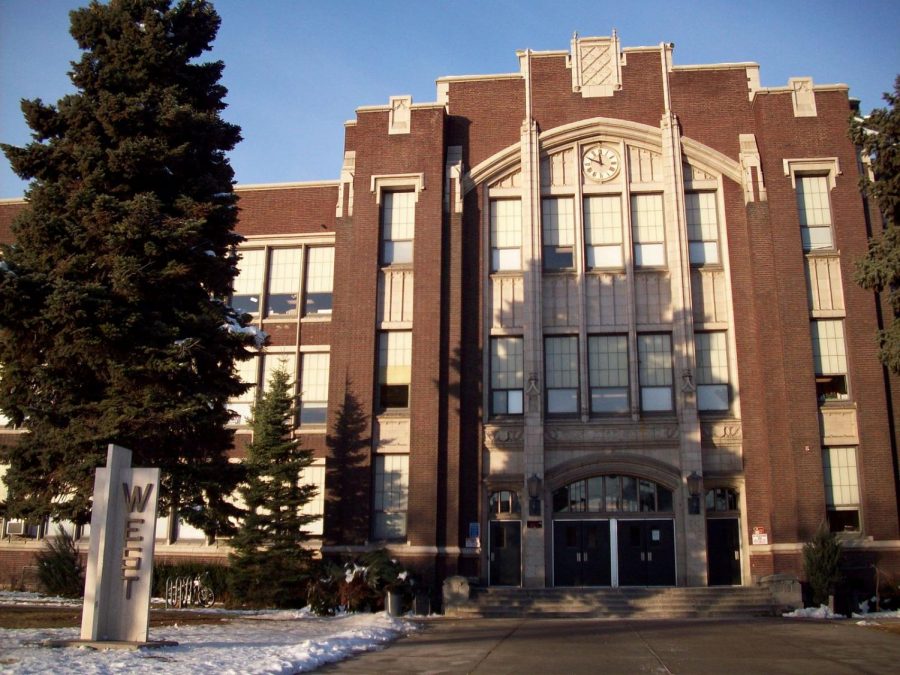Chung: Schools Could Reopen Safely This Fall – but Governments Need to Do More
West High School in Salt Lake City. In the minority-majority Salt Lake City School District, there are concerns about later start times. (Courtesy Wikimedia Commons)
August 6, 2020
As the coronavirus pandemic continues to ravage the world, face coverings and masks have sparked a heated debate in the United States. Questions about who should wear them and why have been a primary focus of these discussions, but the issue of who will provide them is a bigger question that urgently needs to be addressed for schools planning to reopen in the fall.
Teachers and students will be highly vulnerable to the virus if not properly prepared. Imagine a small classroom with a few dozen students cramped together and a teacher facing those students. What would happen if one of those students or the teacher had COVID-19 and coughed? The infection would spread quickly and uncontrollably. This was the case in Israeli schools, which reopened in May and saw over 200 new infection cases almost immediately. But even for schools that recognize the importance of face coverings and will require them this fall, tight budgets present another barrier to 100% compliance. State governments must take action to prepare students and teachers in advance and keep them safe from coronavirus with proper equipment and health guidance.
As I wrote last week, our country may soon see a historic rise in the nationwide teacher shortage due to COVID-19. Even before the pandemic, this shortage was a major problem for Utah in particular. Governor Gary Herbert addressed his concerns about teacher retention in a September 2018 press conference, emphasizing the need to “find a way to pay [teachers] more.” Now, with only weeks remaining before schools reopen, we must find a way to hire and retain teachers in the face of extreme risk. But first, we must listen to what teachers are shouting out.
A few weeks ago, President Trump tweeted expressing his desire to reopen US schools and threatening to “cut off funding if [schools do] not open.” He added that reopening schools “is important for the children & families.” Like him or not, there is some validity to that second statement. Education is important for children and having a place to send their children during the day is essential for working parents. However, there must be a sequence of how things work out – the safety of teachers and students must be fully ensured before schools can resume.
It’s important to note that students and parents have a choice about whether to come to school. For teachers, this isn’t always the case due to financial considerations. If Trump – or Governor Herbert – really wants educators to get back to in-person teaching, he must first recognize and prioritize teachers’ concerns.
One common concern for teachers is the inadequate provision of protective equipment. Teachers are being asked to risk their lives to return to work – especially with Utah students being allowed in schools after exposure to COVID-19. Instructors who are older or have preexisting health conditions are especially worried about returning to the classrooms in person. The risk level that teachers will have to take on is comparable to that of healthcare providers and bus drivers who are considered frontline workers. Thus, teachers have every reason to demand as much prioritization and identical provisions of protective equipment, hazard pay, health insurance and supplementary protections as other frontline workers – and to ask Governor Herbert to roll back his school reopening plan, as the Utah Education Association did last week. Whatever the state does, though, it is critical that schools develop and adopt strategies to peacefully enforce social distancing and the use of face coverings in school buildings.
The future is uncertain. Who knows what will really happen in classrooms once schools reopen? To protect teachers, who will soon be a part of our frontline workforce, both federal and state governments must create policies that ensure their health, safety and future. These policies must include governments’ responsibility to supply protective equipment and free healthcare, grant paid time off for personal and family illness and offer educational opportunities to potential teachers for free so that new teachers will be generated to mitigate the teacher shortage.







